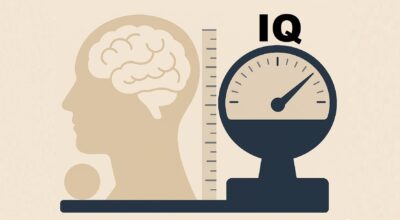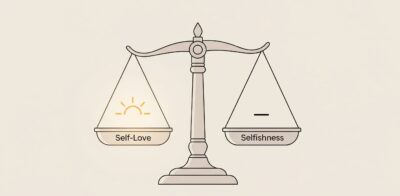Arrogance: INTRODUCTION
A compelling question often lingers in our minds: What happens when our sense of self soars beyond measure? Inflated Self-Image can feel like a shield—yet it often builds walls between us and others. Are you ready to explore practical steps to harness its strengths without letting it harm your connections? Read on to uncover precise definitions, actionable strategies, and vivid, real-life narratives that illuminate every angle of this phenomenon.
Table of contents
1. Definition and Components of Arrogance
Inflated Self-Image—commonly termed arrogance—arises when individuals hold an exaggerated opinion of their abilities or importance. According to the Oxford English Dictionary, arrogance is “a high or inflated opinion of one’s own abilities, importance, and so on, that gives rise to presumption or excessive self-confidence, or to a feeling or attitude of being superior to others”. Moreover, the Cambridge Dictionary describes it as “the quality of being unpleasantly proud and behaving as if you are more important than, or know more than, other people”.
Components of an Arrogance
- Unquestioned Certainty: Believing one’s knowledge is beyond doubt.
- Perspective Blindness: Failing to consider others’ viewpoints.
- Superiority Display: Acting in ways that signal dominance.
- Feedback Rejection: Ignoring constructive criticism.
When Confidence Becomes Arrogance
- Healthy Confidence supports risk-taking and collaboration.
- Arrogant Posture shuts down dialogue and breeds resentment.
2. Impact on Communication
Arrogance often erodes trust and stalls productive dialogue. When one person assumes superiority, others feel unheard and may withdraw or become defensive. Therefore, messages get distorted, and genuine collaboration falters. Research shows that arrogance “creates interpersonal distance” and reduces willingness to share ideas. Consequently, teams miss diverse insights, and conflicts escalate instead of resolving.
3. Steps to Enhance Positive Confidence
Although true arrogance obstructs relationships, certain facets of self-assuredness can be leveraged constructively. Follow these steps:
3.1. Anchor in Competence
- List your verified skills and achievements.
- Reflect weekly on recent successes to build grounded confidence.
3.2. Set Collaborative Goals
- Define objectives that require team input.
- Celebrate group achievements alongside personal wins.
3.3. Practice Assertive Phrasing
- Replace “You must…” with “I propose…”
- Use “I feel…” statements to own your viewpoint without belittling others.
3.4. Solicit Targeted Feedback
- Ask two colleagues for one strength and one growth area.
- Record suggestions and act on at least one monthly.
4. Steps to Reduce Harmful Arrogance
To curb an unhealthy Inflated Self-Image, integrate these practical techniques:
4.1. Cultivate Intellectual Humility
- Adopt the habit of asking, “What don’t I know?”
- Maintain a “Learning Log” of mistakes and lessons each week.
4.2. Engage in Perspective-Taking
- Before responding, pause for three deep breaths.
- Ask, “How might they see this?” and summarize their view.
4.3. Embrace Constructive Criticism
- Frame feedback as a gift, not an attack.
- Thank the giver, then reflect for 24 hours before reacting.
4.4. Limit Self-Promotion Windows
- Allocate specific “showcase” moments in meetings.
- Outside those slots, listen actively and refrain from highlighting your wins.
5. Arrogance: Vivid Real-Life Examples
5.1. Example 1: The Visionary CEO
Fatima, founder of a rapid-growth tech startup, believed her strategy was flawless. During board meetings, she interrupted advisors mid-sentence and dismissed data she hadn’t personally analyzed. As a result, investors grew restless, and turnover spiked. Only after a mentor challenged her to keep a “confidence diary”—noting every time she cut someone off—did she realize how often her Inflated Self-Image blocked vital input. By implementing a “no interruption” rule and rotating meeting chairs, Fatima restored trust and saw her company’s innovation pipeline flourish.
5.2. Example 2: The Top-Scoring Student
Youssef consistently ranked first in his class. He assumed classmates couldn’t offer valuable viewpoints. During group projects, he assigned tasks unilaterally and rarely heeded suggestions. His peers began excluding him from study sessions, and his grades plateaued. In response, a teacher asked him to interview group members about their methods and present their ideas. Confronted with fresh problem-solving approaches, Youssef realized his arrogance had been a barrier. He now invites classmates to co-lead presentations, enhancing both his knowledge and theirs.
5.3. Example 3: The Community Organizer
Amina, a volunteer coordinator at a youth center, prided herself on flawless event planning. She resisted new ideas, insisting her past successes guaranteed future results. When attendance dipped at a major fundraising event, her team felt demotivated. After attending a workshop on active listening, Amina introduced a “town-hall” forum where every volunteer could pitch plans. Embracing diverse input revitalized the center’s programs and re-energized the volunteer base.
5.4. Example 4: The Experienced Teacher
Mr. Khalid, with 20 years of teaching, believed newer educators lacked his wisdom. He seldom collaborated on lesson plans and found peer observations tedious. When student engagement declined, he refused to try digital tools his colleagues recommended. A school improvement coach suggested he swap classrooms for a week. Facing firsthand the successes of fresh techniques, Mr. Khalid adopted blended learning strategies. His willingness to check his inflated self‐view boosted both student results and staff morale.
Concluding Thoughts
Mastering your Arrogance means striking a balance: drawing on genuine strengths while staying open to growth. Therefore, by applying targeted steps—anchoring competence, seeking feedback, practicing humility—you can transform potential barriers into bridges. Remember, every time you choose curiosity over certainty, you pave the way for stronger connections and richer outcomes.
references
Warning: The provided links lead only to the specified content. Other areas of those sites may contain material that conflicts with some beliefs or ethics. Please view only the intended page.
- Foundations of Arrogance… (PMC, 2021): framework defining arrogance components.
https://www.ncbi.nlm.nih.gov/pmc/articles/PMC8101990/ - Predictors & consequences of intellectual humility (PMC, 2022): outlines intellectual humility traits.
https://www.ncbi.nlm.nih.gov/pmc/articles/PMC9244574/ - Why Humility Is Important (Zenger Folkman, 2023): study comparing arrogant vs. humble leaders.
https://zengerfolkman.com/articles/why-humility-is-important-the-7-signs-of-arrogance/ - Confidence vs Arrogance (CoachHub, 2022): clarifies differences with examples.
https://www.coachhub.com/blog/confidence-and-arrogance/ - Evidence for arrogance… (PMC, 2014): research on perception triggered by dismissive behavior.
https://www.ncbi.nlm.nih.gov/pmc/articles/PMC5500344/ - Intellectual humility (Wikipedia, 2025): meta‑analysis and defining components.
https://en.wikipedia.org/wiki/Intellectual_humility - Image designed by kues1 / freepik


















